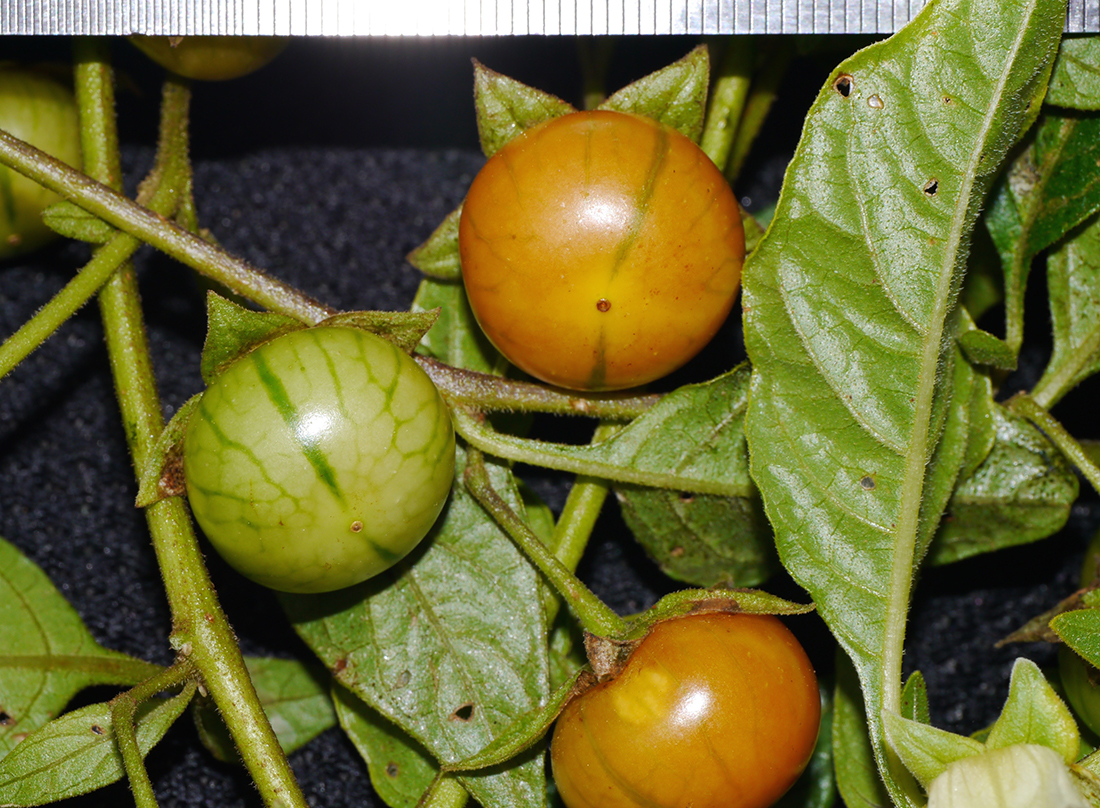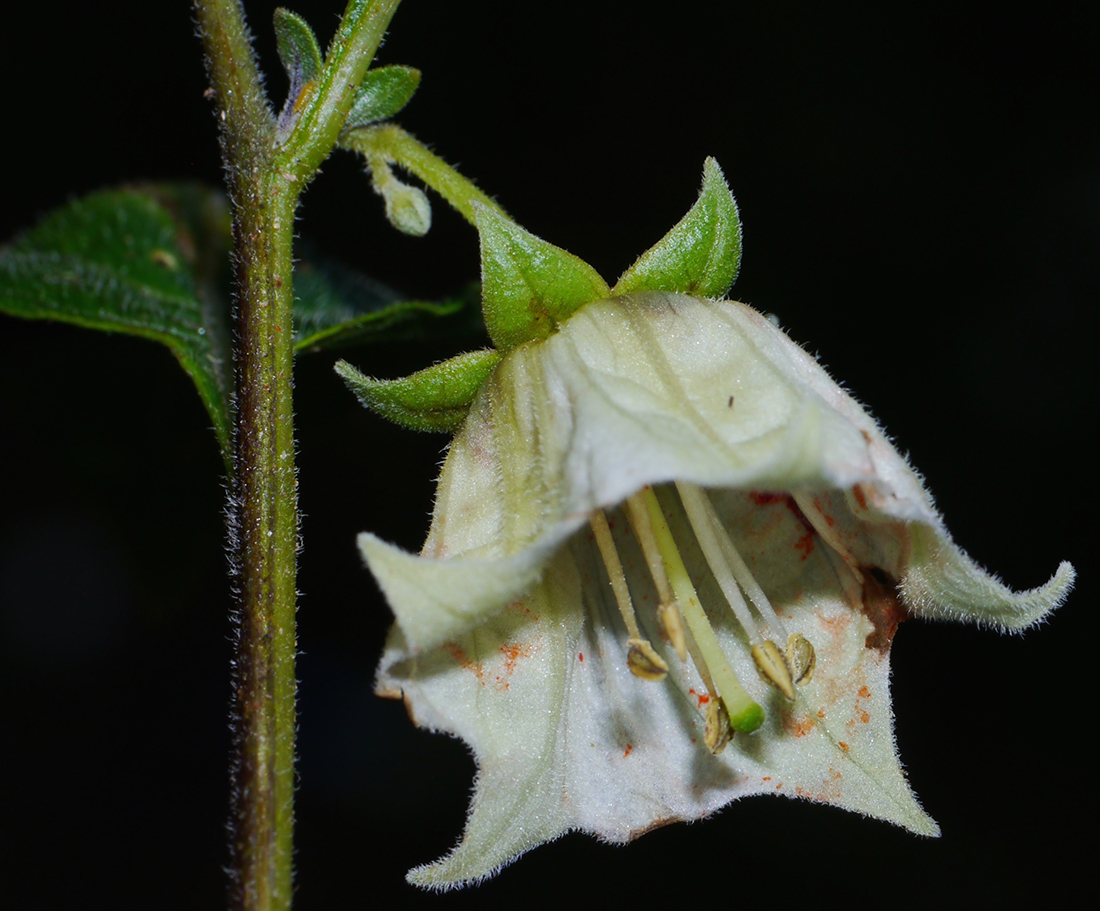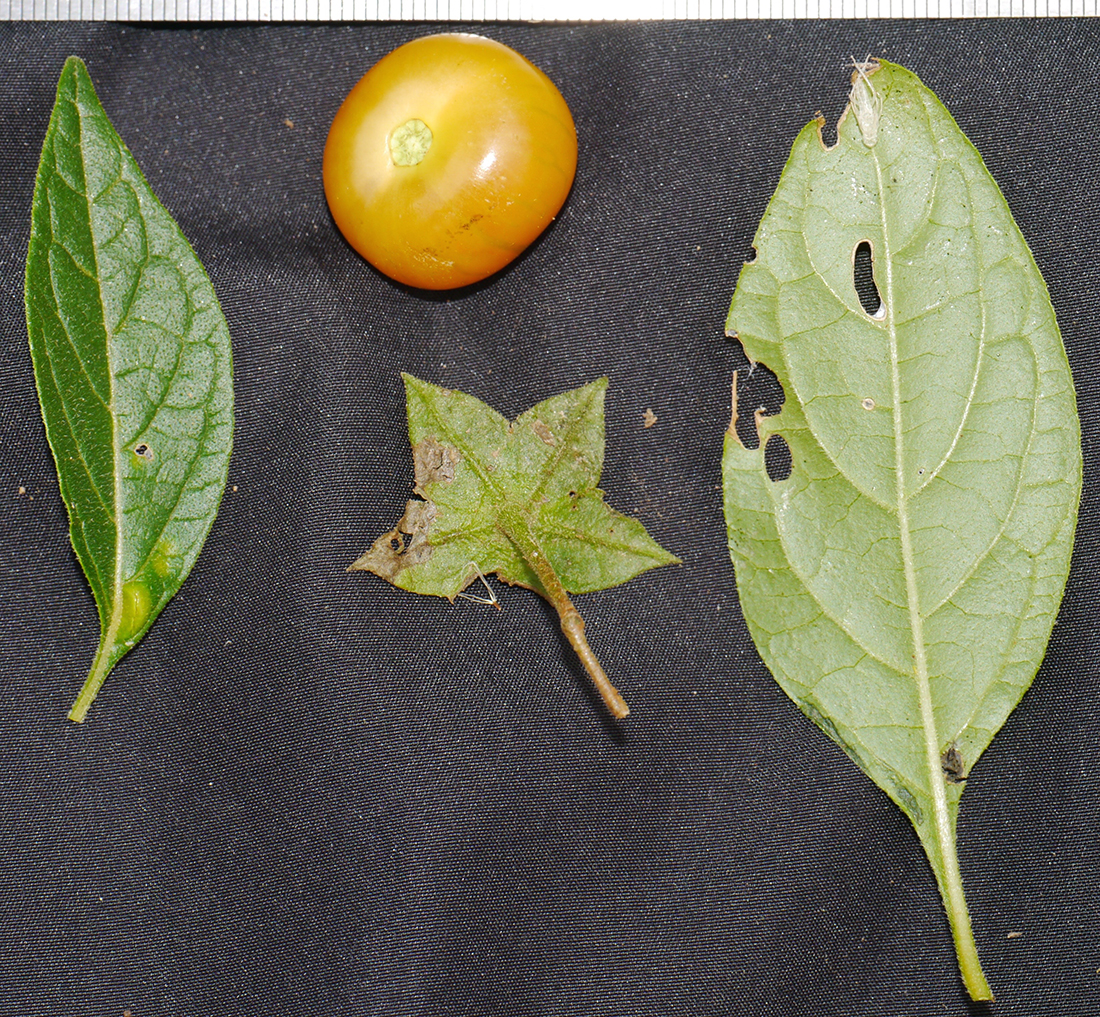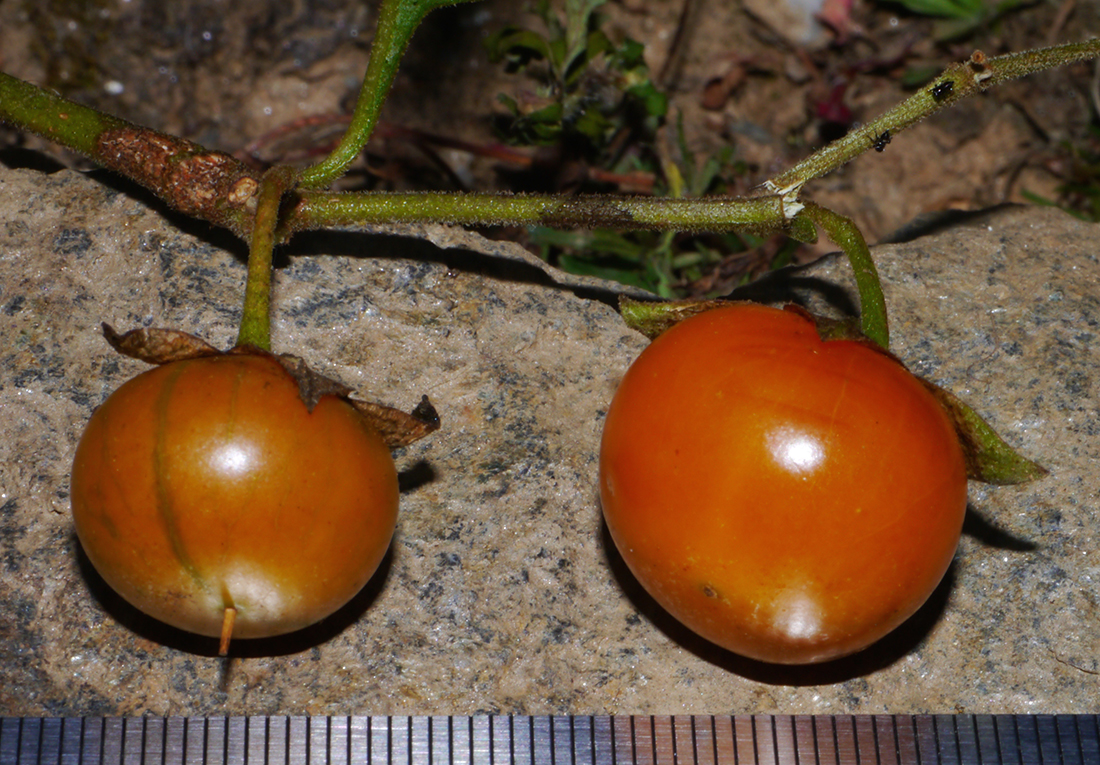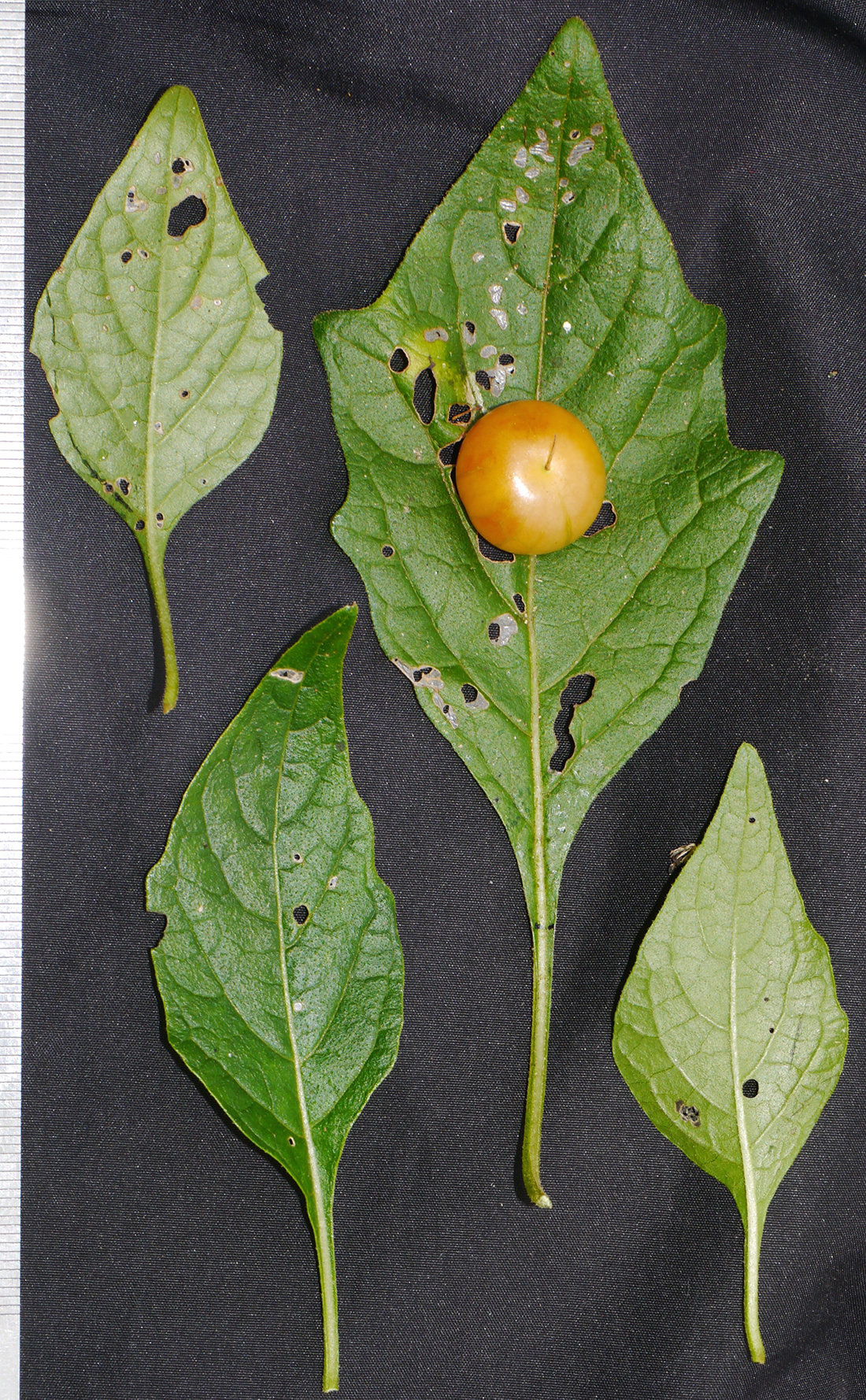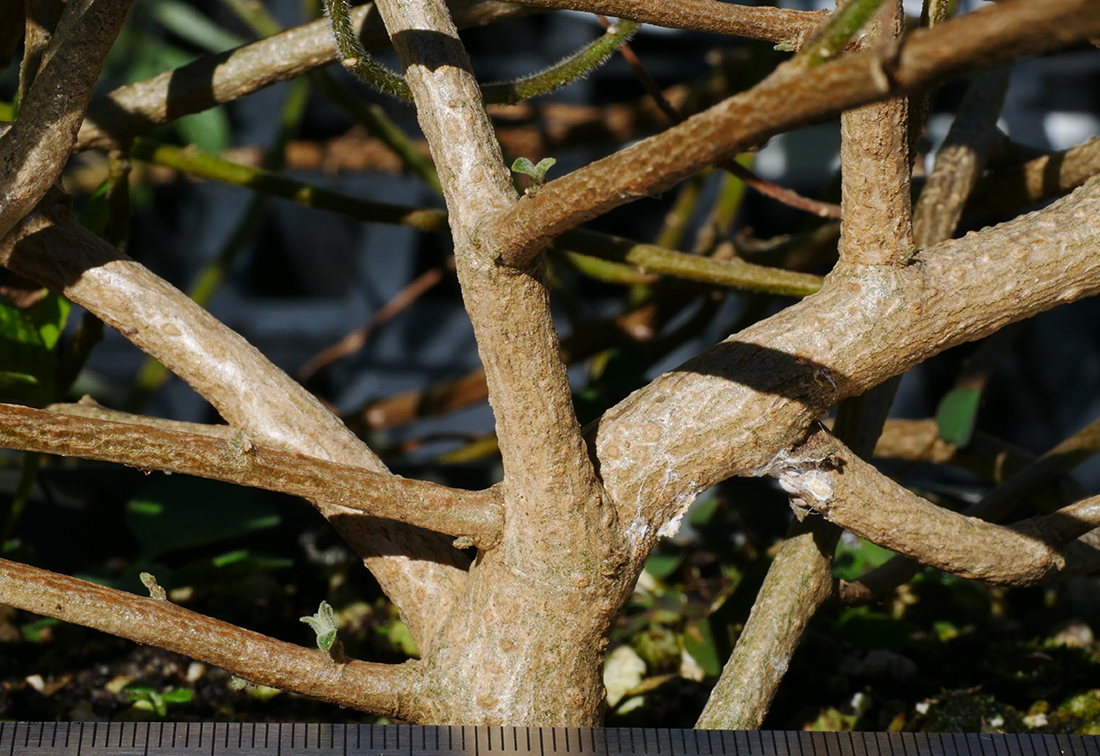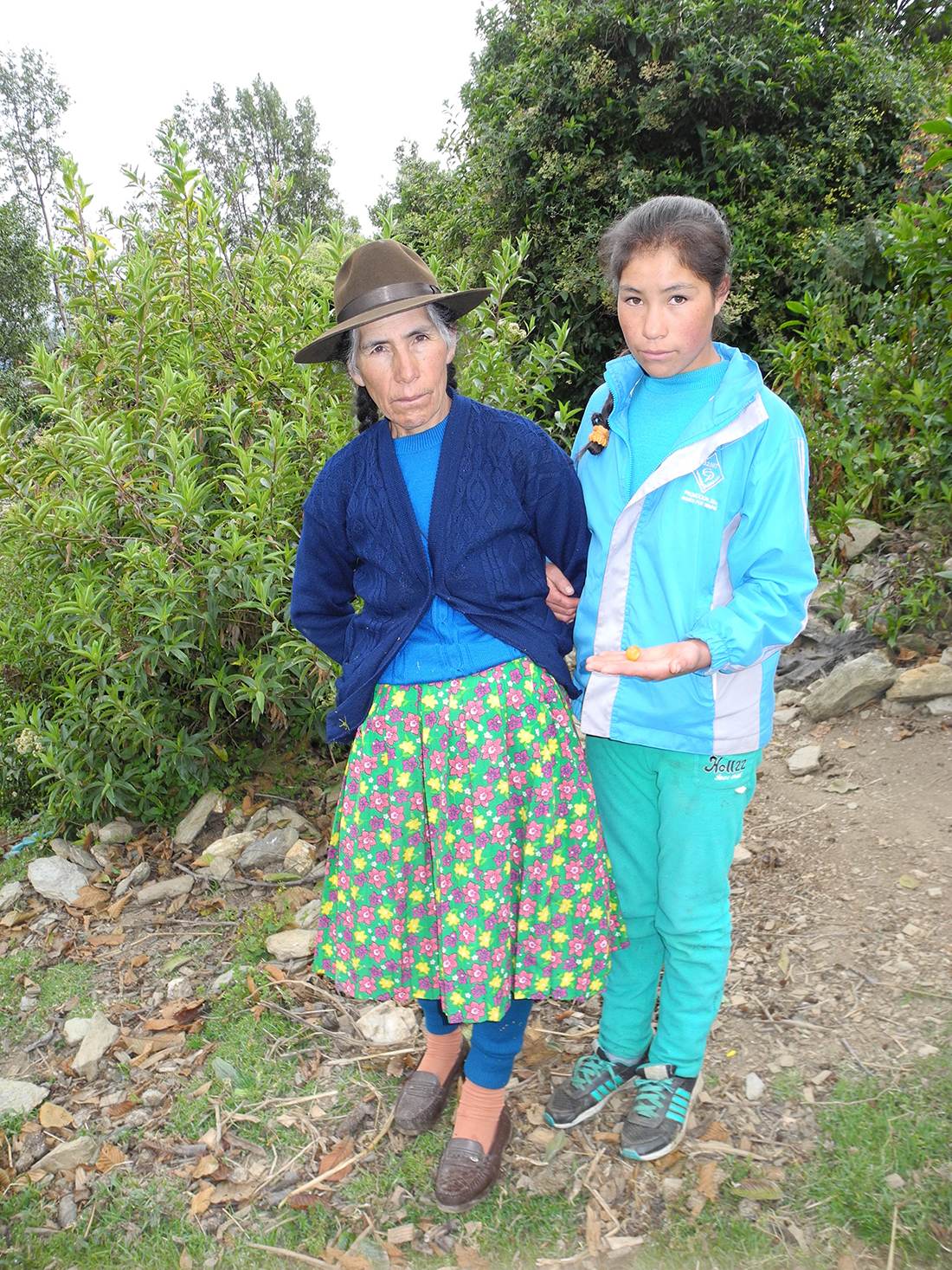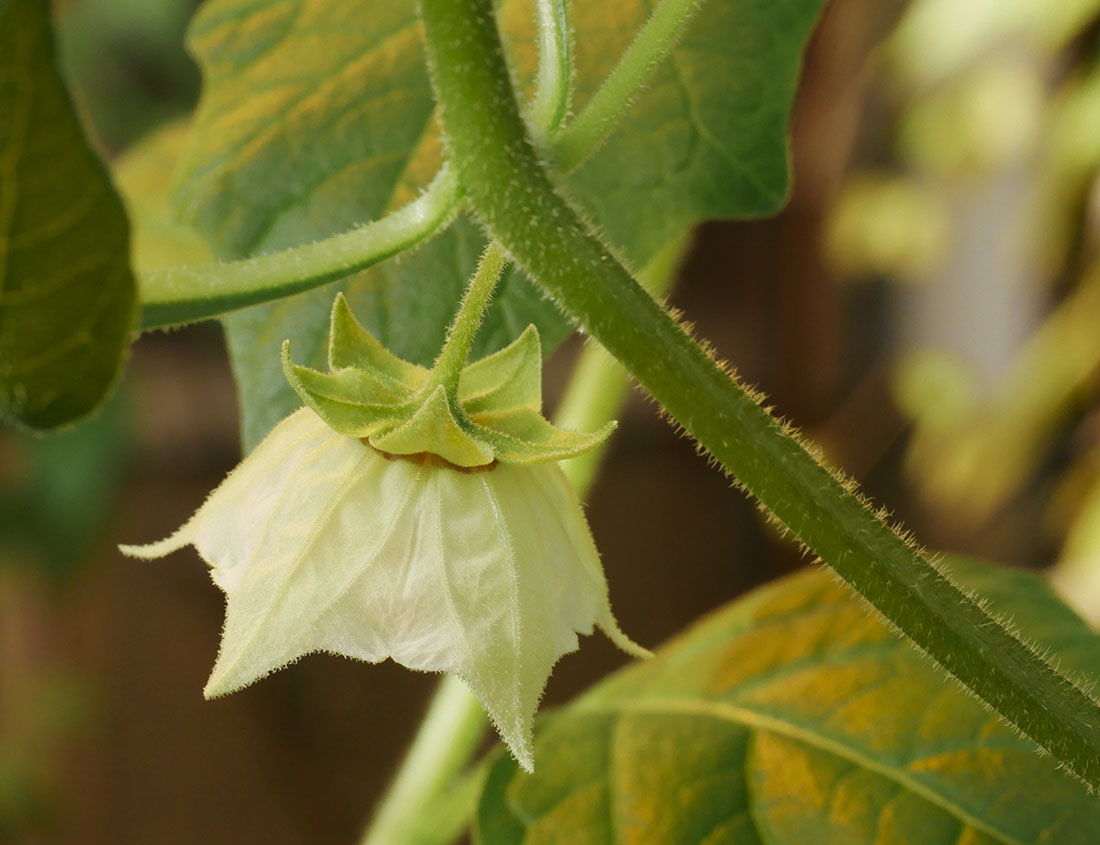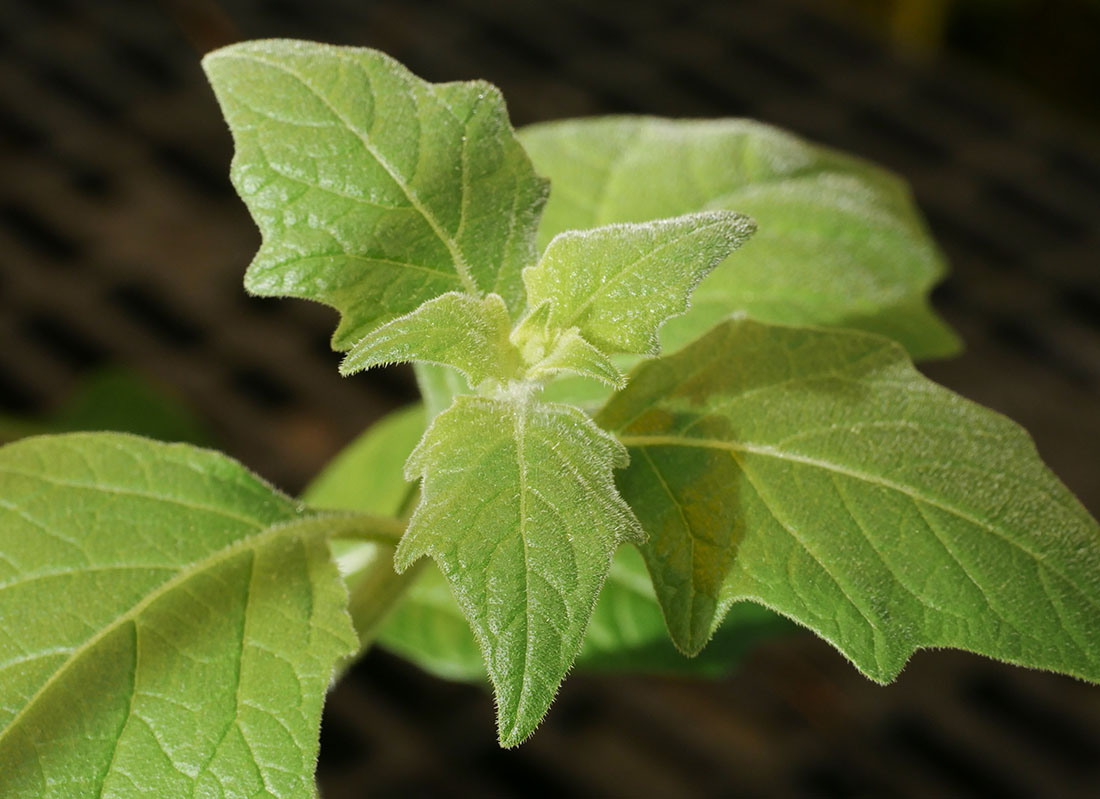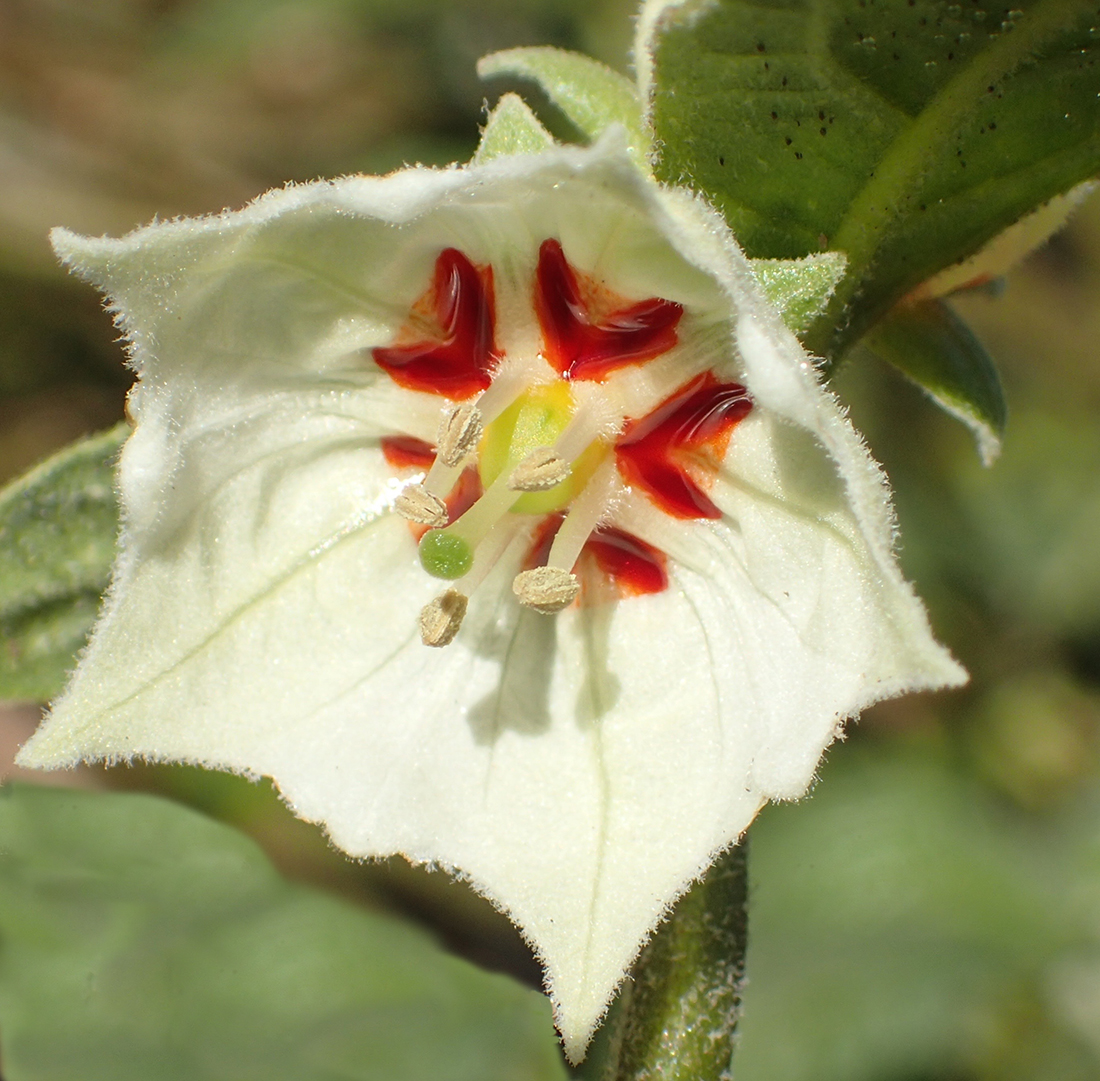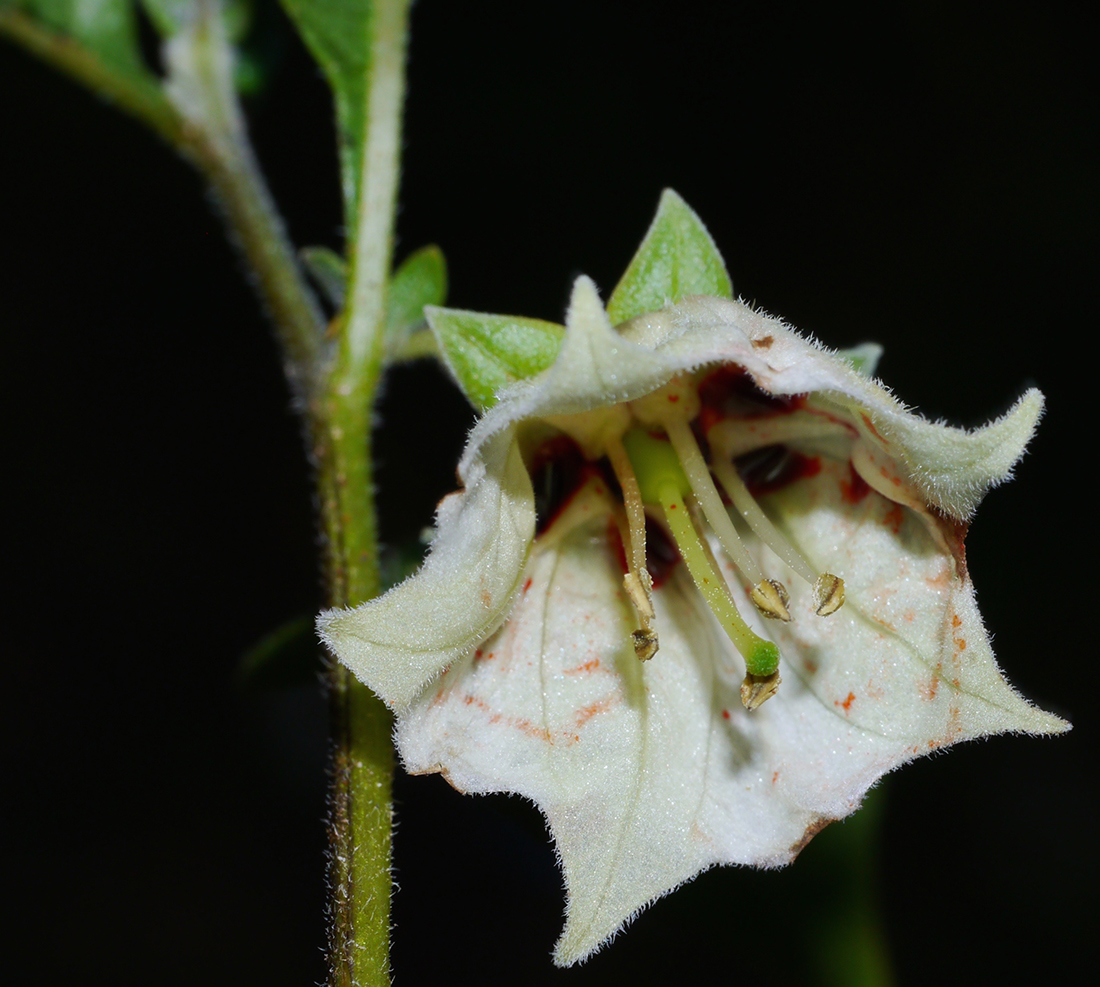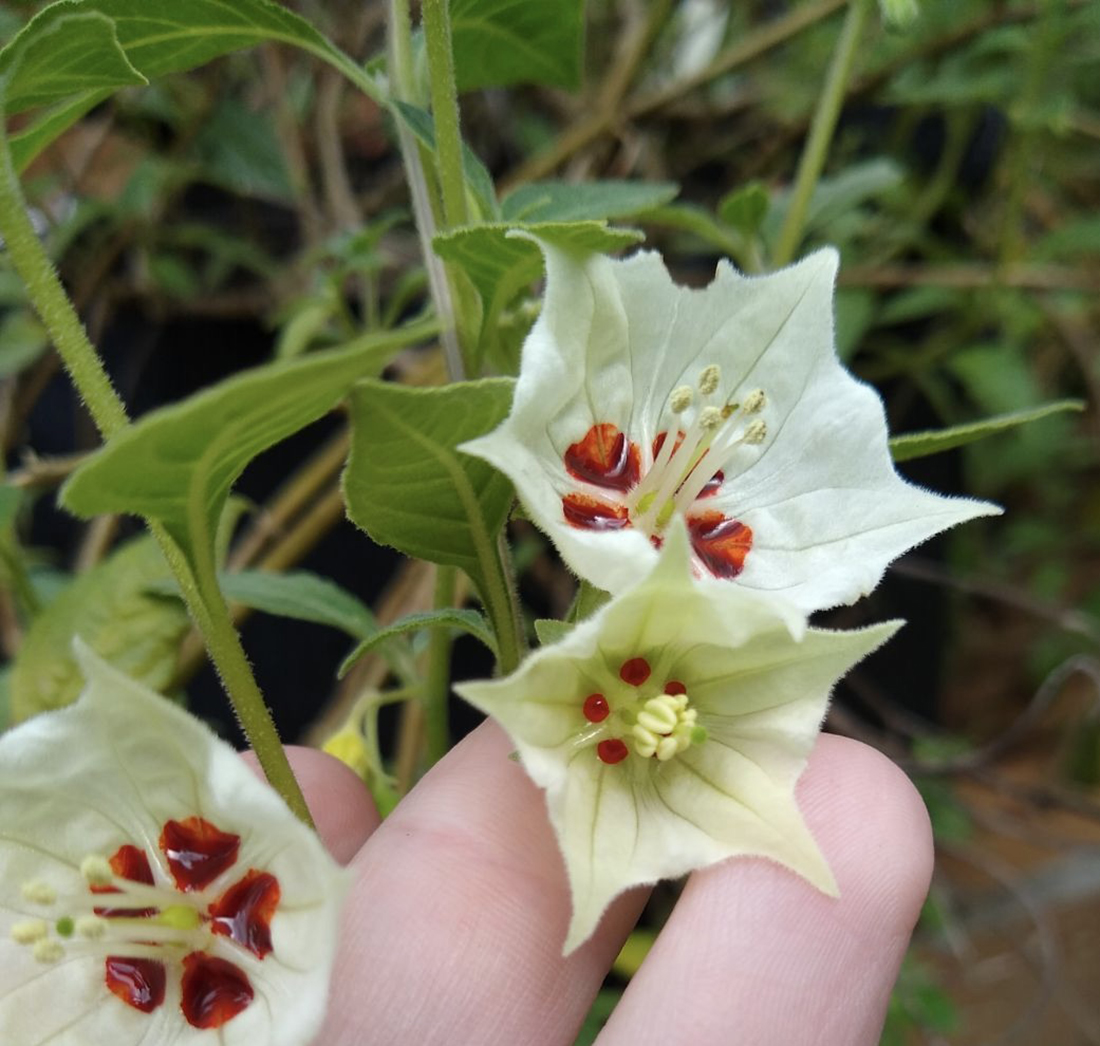
Figure 1. Flowers of Jaltomata weigendiana. Pistillate phase (anthers not yet open) on lower right. Functionally hermaphroditic phase showing on both lower left and upper right. Photo by Paul R. Wilson at his home in Connecticut. Mione et al. 873/874. The following is an exerpt from Mione et al. 2022.
Nectar is produced during both floral sexual phases of J. weigendiana. Flowers generally spend four times as many days in the male phase (Days 2–5) relative to the female phase (Day 1). Flowers produce roughly the same cumulative volume of nectar during the two sexual phases (i.e., the total nectar volume of Day1 compared with the male phase), in part because nectar is secreted prior to anthesis. However, cumulative average sugar production is about four times higher during the male phase compared to the female phase. Even on a per day basis, nectar sugar production is higher during the first two days of the male phase than during the single day of the female phase. Greater nectar reward during one floral phase relative to the other is gender-biased nectar production (GBNP, Carson and Harms 2006). For sexual selection to have driven this difference in duration of sexual phase and / or sugar reward, one would need to demonstrate that pollinators have been able to distinguish female and male flowers from each other and preferentially visit flowers that provide greater rewards (Carlson and Harms 2006, Carlson 2007). This is possible given that the corolla of J. weigendiana enlarges when transitioning from the female to the male phase. Male fitness is often limited by the number of mates (Wilson and Burley 1983, p. 45, and references therein) and a female-phase flower usually needs only one or few visits to be pollinated and set fruit. Given that the female phase is followed by the male phase, a plant can achieve greater fitness by attracting more visits to a pollen-providing flower than to a female flower. Having female-phase flowers the same size and open for the same duration as male-phase flowers would invite an equal number of visits. And these limited number of visits would be better spent asymmetrically by directing pollinators preferentially to flowers that provide pollen. Given a finite number of pollinator visits, more than a few visits to a flower that is female has the cost of lost visits to flowers where pollen could have been picked up and carried elsewhere resulting in the siring of seeds. Moore and Pannell (2011) commented that “sexual selection to increase male mating success can be interpreted as a major selective force in the evolution of floral diversity.” For J. weigendiana, it is not clear that sexual selection has caused a longer male phase, a larger corolla during the male phase, and GBNP. However, during the male phase, the correlated features—larger corolla size, longer duration of phase, and markedly greater sugar reward—suggest sexual selection may have driven the differences within these traits. [See Mione et al. 2022 for Literature Citations]
